Related Research Articles
The year 1827 in science and technology involved some significant events, listed below.
This is a list of scientific phenomena and concepts named after people. For other lists of eponyms, see eponym.
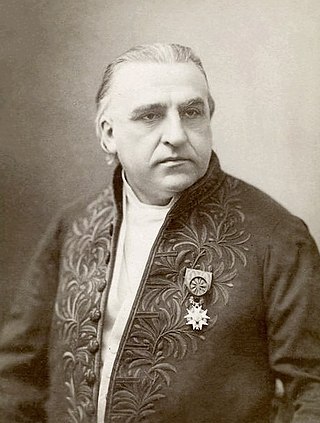
Jean-Martin Charcot was a French neurologist and professor of anatomical pathology. He worked on hypnosis and hysteria, in particular with his hysteria patient Louise Augustine Gleizes. Charcot is known as "the founder of modern neurology", and his name has been associated with at least 15 medical eponyms, including various conditions sometimes referred to as Charcot diseases.
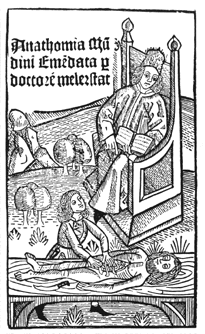
A prosector is a person with the special task of preparing a dissection for demonstration, usually in medical schools or hospitals. Many important anatomists began their careers as prosectors working for lecturers and demonstrators in anatomy and pathology.
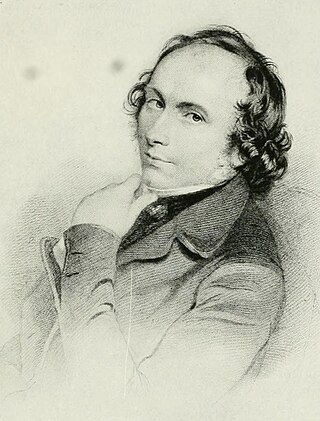
William Stokes was an Irish physician, who was Regius Professor of Physic at Trinity College Dublin. He graduated from the University of Edinburgh Medical School with an MD in 1825 later returning the practice in Dublin at Meath Hospital. He went on to create two important works on cardiac and pulmonary diseases – A Treatise on the Diagnosis and Treatment of Diseases of the Chest (1837) and The Diseases of the Heart and Aorta (1854) – as well as one of the first treatises on the use of the stethoscope. He emphasised the importance of clinical examination in forming diagnoses, and of ward-based learning for students of medicine.
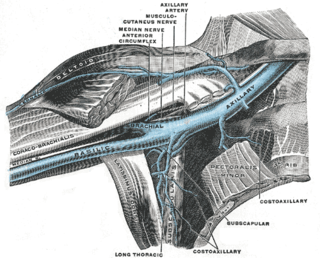
Paget–Schroetter disease is a form of upper extremity deep vein thrombosis (DVT), a medical condition in which blood clots form in the deep veins of the arms. These DVTs typically occur in the axillary and/or subclavian veins.

Albright's hereditary osteodystrophy is a form of osteodystrophy, and is classified as the phenotype of pseudohypoparathyroidism type 1A; this is a condition in which the body does not respond to parathyroid hormone.
Adams–Stokes syndrome, Stokes–Adams syndrome or Gerbec–Morgagni–Adams–Stokes syndrome is a periodic fainting spell in which there is intermittent complete heart block or other high-grade arrhythmia that results in loss of spontaneous circulation and inadequate blood flow to the brain. Subsequently, named after two Irish physicians, Robert Adams (1791–1875) and William Stokes (1804–1877), the first description of the syndrome is believed to have been published in 1717 by the Carniolan physician of Slovene descent Marko Gerbec. It is characterized by an abrupt decrease in cardiac output and loss of consciousness due to a transient arrhythmia; for example, bradycardia due to complete heart block.

Progressive muscular atrophy (PMA), also called Duchenne–Aran disease and Duchenne–Aran muscular atrophy, is a disorder characterised by the degeneration of lower motor neurons, resulting in generalised, progressive loss of muscle function.
Gabriel Anton was an Austrian neurologist and psychiatrist. He is primarily remembered for his studies of psychiatric conditions arising from damage to the cerebral cortex and the basal ganglia.
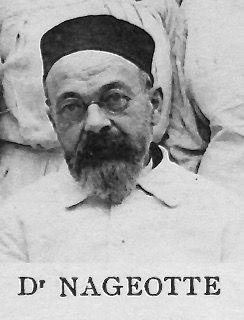
Jean Nageotte was a French neuroanatomist born in Dijon.

A ciliopathy is any genetic disorder that affects the cellular cilia or the cilia anchoring structures, the basal bodies, or ciliary function. Primary cilia are important in guiding the process of development, so abnormal ciliary function while an embryo is developing can lead to a set of malformations that can occur regardless of the particular genetic problem. The similarity of the clinical features of these developmental disorders means that they form a recognizable cluster of syndromes, loosely attributed to abnormal ciliary function and hence called ciliopathies. Regardless of the actual genetic cause, it is clustering of a set of characteristic physiological features which define whether a syndrome is a ciliopathy.
References
- ↑ Merton R K, 1973
- ↑ Gordon, BL (1971). Current medical information and terminology (4th ed.). Chicago.
- ↑ "How are genetic conditions and genes named?: MedlinePlus Genetics".
- 1 2 WHO (May 2015). "World Health Organization Best Practices for the Naming of New Human Infectious Diseases". World Health Organization: 3. Retrieved 24 June 2020.
{{cite journal}}: Cite journal requires|journal=(help) - ↑ WHO (8 May 2015). "News News releases Statements Notes for the media Previous years Commentaries Events Fact sheets Fact files Questions & answers Features Multimedia Contacts WHO issues best practices for naming new human infectious diseases". World Health Organization. Retrieved 24 June 2020.
- ↑ "Classification and nomenclature of morphological defects". Lancet . 1 (7905): 513. March 1975. doi:10.1016/S0140-6736(75)92847-0. PMID 46972. S2CID 37636187.
- ↑ Jana N, Barik S, Arora N (2009-03-09). "Current use of medical eponyms—a need for global uniformity in scientific publications". BMC Med Res Methodol . 9: 18. doi: 10.1186/1471-2288-9-18 . PMC 2667526 . PMID 19272131.
- ↑ Macaskill MR, Anderson TJ (16 April 2013). "Whose name is it anyway? Varying patterns of possessive usage in eponymous neurodegenerative diseases". PeerJ. 1: e67. doi: 10.7717/peerj.67 . PMC 3642700 . PMID 23646286.
- ↑ Neal Whitman. "Possessives". quickanddirtytips.com. Archived from the original on 2017-06-16. Retrieved 2017-06-16.
- ↑ Merriam-Webster's Dictionary of English Usage . Merriam-Webster. 1994. p. 475. ISBN 978-0-87779-132-4.
- ↑ Fries, Charles Carpenter (1940). American English Grammar: The Grammatical Structure of Present-day American English with Especial Reference to Social Differences Or Class Dialects . Appleton-Century. (not checked by editor)
- ↑ Merriam-Webster's Dictionary of English Usage . Merriam-Webster. 1994. p. 475. ISBN 978-0-87779-132-4.
The only statistical investigation of the genitive case that we are aware of can be found in Fries 1940. Fries found that the possessive genitive was the most common, but that it accounted for only 40 percent of all genitives.
- ↑ Segen, J. C. (1992). The dictionary of modern medicine. Taylor & Francis. ISBN 9781850703211.
- ↑ "For eponyms, AAMT advocates dropping the possessive form". MTStars. Retrieved 23 July 2011.
- ↑ Weiss, Emilio, Strauss, Bernard S. (1991). "The Life and Career of Howard Taylor Ricketts". Reviews of Infectious Diseases. Vol. 13. The University of Chicago. pp. 1241–2.
{{cite book}}: CS1 maint: multiple names: authors list (link) - ↑ Thomsen, Julius (1875). "Tonische Krämpfe in willkürlich beweglichen Muskeln in Folge von ererbter physischer Disposition (Ataxia muscularis?)". Archiv für Psychiatrie und Nervenkrankheiten. Berlin. 6: 702–718. doi:10.1007/bf02164912. S2CID 46151878.
- ↑ MacAskill, Michael R.; Anderson, Tim J. (16 April 2013). "Whose name is it anyway? Varying patterns of possessive usage in eponymous neurodegenerative diseases". PeerJ. 2013 (1): e67. doi: 10.7717/peerj.67 . PMC 3642700 . PMID 23646286.